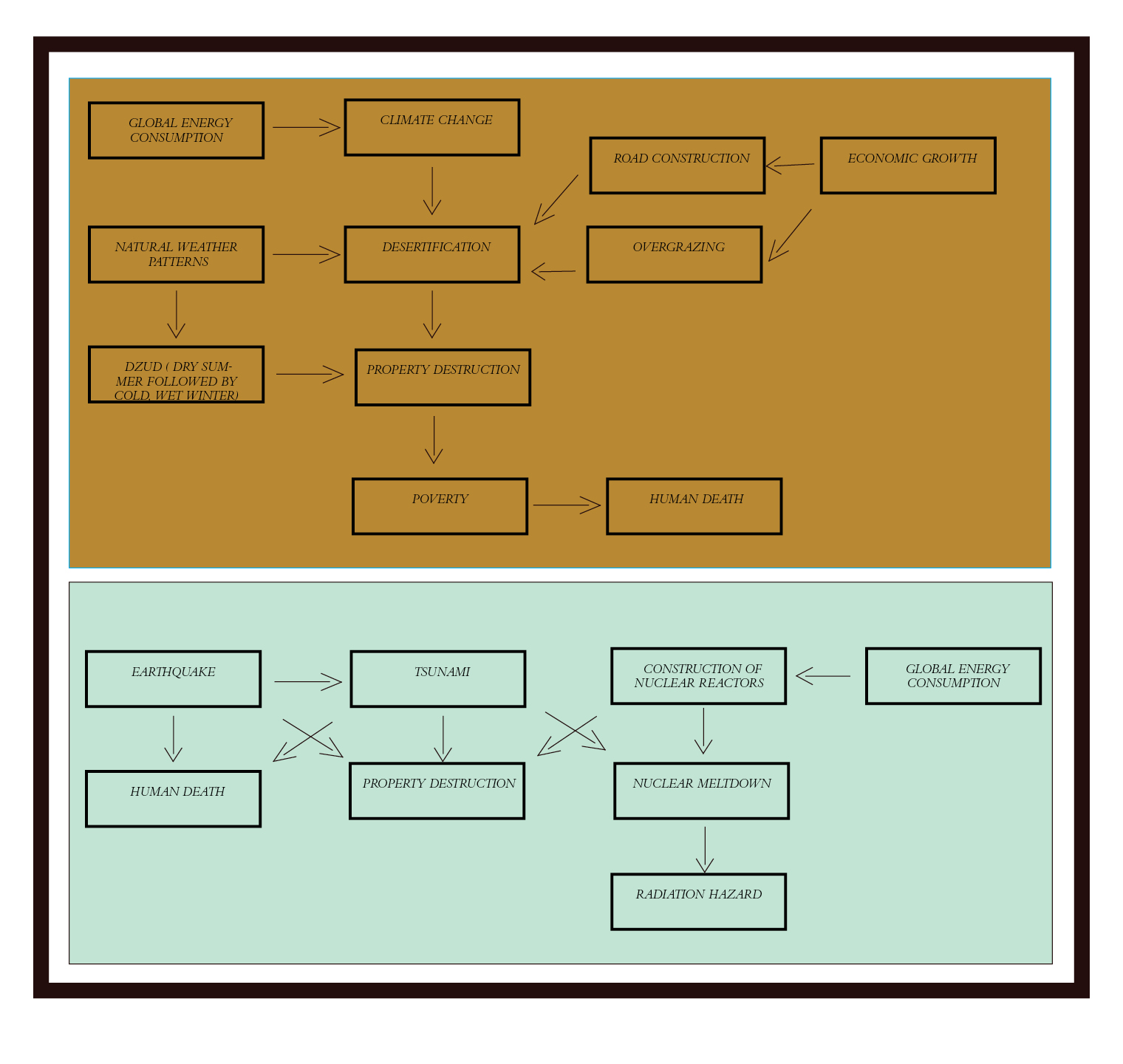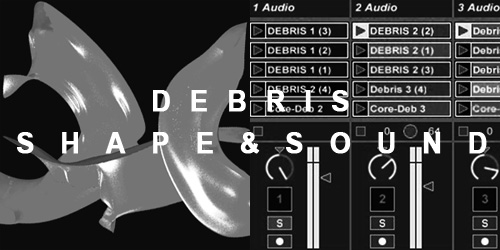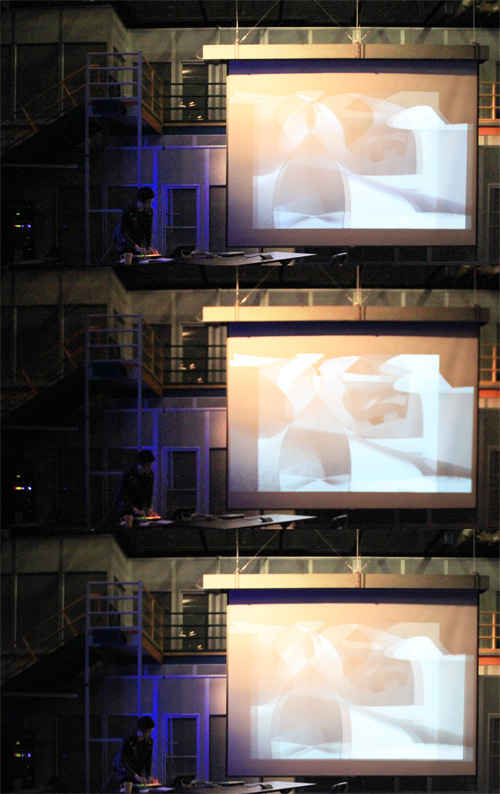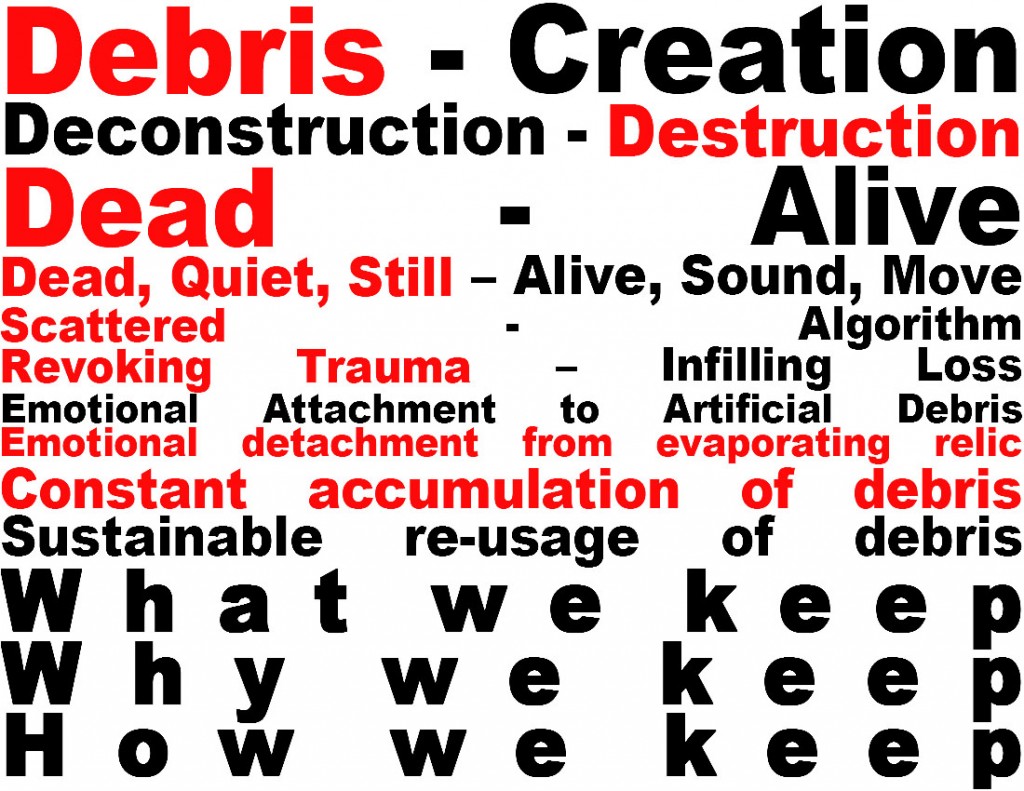
Debris – Creation
Deconstruction – Destruction
Dead – Alive
Dead, Quiet, Still – Alive, Sound, Move
What we keep – Why we keep – How we keep
Scattered – Algorithm
Revoking Trauma – Infilling Loss
Emotional Attachment to Artificial Debris – Emotional detachment from evaporating relic
Constant accumulation of debris – Sustainable re-usage of debris
The main point of my response is to making deconstruction structure by using debris of 3/11 Tsunami. To convert the debris from dead relics to alive sources, I am planning to put sound, movement, algorithm and stories of affected people into debris.
However, this process of debris is standing on a keen line. It could either revoke the trauma or infill the mental loss. I have to make a healing monument rather than hurting trash. Therefore, I am trying to figure out the reason why people build the monument after disasters and the reason why people keep remainders of their dead relatives and so on.
On September 8, 2011, The New York Times published an article, “What We Kept”, which was written about privately kept relics after 9/11. With the pictures of 22 mundane items, the stories of 22 people were published online.
Why do these people have kept these relics? What kind of relics do they have kept? And, how could we expand these relics and attached emotions in a creative and positive way?
Following pictures and stories are parts of articles.
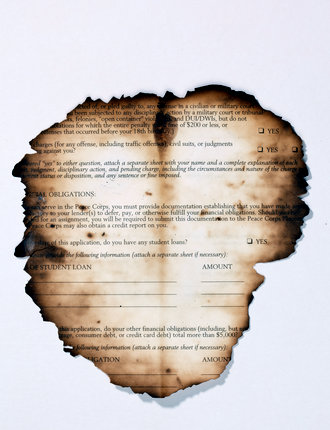
©Tony Cenicola/The New York Times
“I was downtown when the planes hit the towers on Sept. 11. I walked back to Brooklyn over the bridge to where my family and I were living on Sackett Street near the waterfront in Cobble Hill. By the time I got home, the towers had fallen and our neighborhood was littered with papers and debris that had blown across the water from the towers. This is a piece of paper I picked up in the street in front of our house — a Peace Corps application burned around the edges.”
- Nicholas Arauz
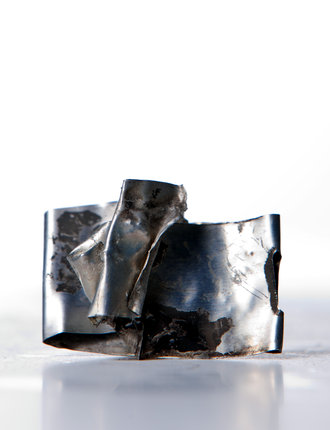
©Tony Cenicola/The New York Times
“I was a New York City police officer and picked up a thin ribbon of metal from the site. I feel kind of dumb because it didn’t occur to me that there were others doing this kind of thing. I didn’t want a ‘souvenir,’ but I wanted something tactile just so I knew it really happened. I like that it is just a piece of scrap to anyone who sees it, not that I display it. I try not to think about it most of the time and something tells me I’m not going to enjoy reading about what others kept, but thank you for helping me not to forget.”
-Dante Messina

©Tony Cenicola/The New York Times
”Recovery workers gave these to me while I was volunteering at ground zero. I believe the pin is from a steel beam. There is a fragment of marble, and to me the most disturbing artifact, glass from one of the towers. I do not display these at home. They have been in a drawer for over nine years.”
- Stephanie Zessos
Link to the article: http://www.nytimes.com/2011/09/08/us/sept-11-reckoning/relics.html?_r=1
